Amino Silica Gel
The Amine functionalized Silica Gel phases are designed to address the following applications:

- Basic compounds such as alkaloids in Normal Phase mode (using Normal Phase organic solvents)
- Separation of vitamins or sugars in Reversed Phase mode (using water and water-miscible solvents)
- Metal scavenger – removal or recovery of acid chlorides, isocyanates, etc.
- Precursor for the development of chiral stationary phase packings
The silanol groups on the surface of bare silica gel can act as a Bronsted acid (silicic acid). This means they can adsorb basic compounds by ionic bonding. The modified silica surface, treated with an amino-propyl silane by chemical bonding, eliminates the ionic interactions with basic compounds. Without this treatment, the ionic bonds have strong effects on basic solutes, adsorbing the basic solute to the surface of the silica gel, which causes the solutes to elute from the column with tailing and low yield.
The Amino Silicas serve multiple functions depending on conditions.
Recommended applications include: As Normal Phase for basic compounds like alkaloids; as a Reversed Phase for vitamins or sugars; metal scavenger removal/recovery for acid chlorides, isocyanates, etc.; dyes, lipids, mycotoxins, pesticides.

Separation of Neutral Compounds
The Amine functionalized Silica Grade shows a similar chromatogram as Normal Phase silica but has lower adsorption power. The k’ value of the Amine functionalized Silica Grade is about half that of corresponding bare silica gel.
Chromatography Operating Conditions:
Column: 28 x 100 mm cartridge column
Silica: Premium Rf Spherical Silica Gel, 100Å, 40-75μm vs. Premium Rf Spherical NH Silica Gel, 100Å, 40-75μm
Mobile phase: Ethyl-acetate/n-hexane 10/90 (w/w)
Flow rate: 28 ml/min
Detection: UV-254 nm
Samples: 1) Benzene, 2) Di-octyl phthalate, 3) Di-butyl phthalate, 4) Di-methyl phthalate
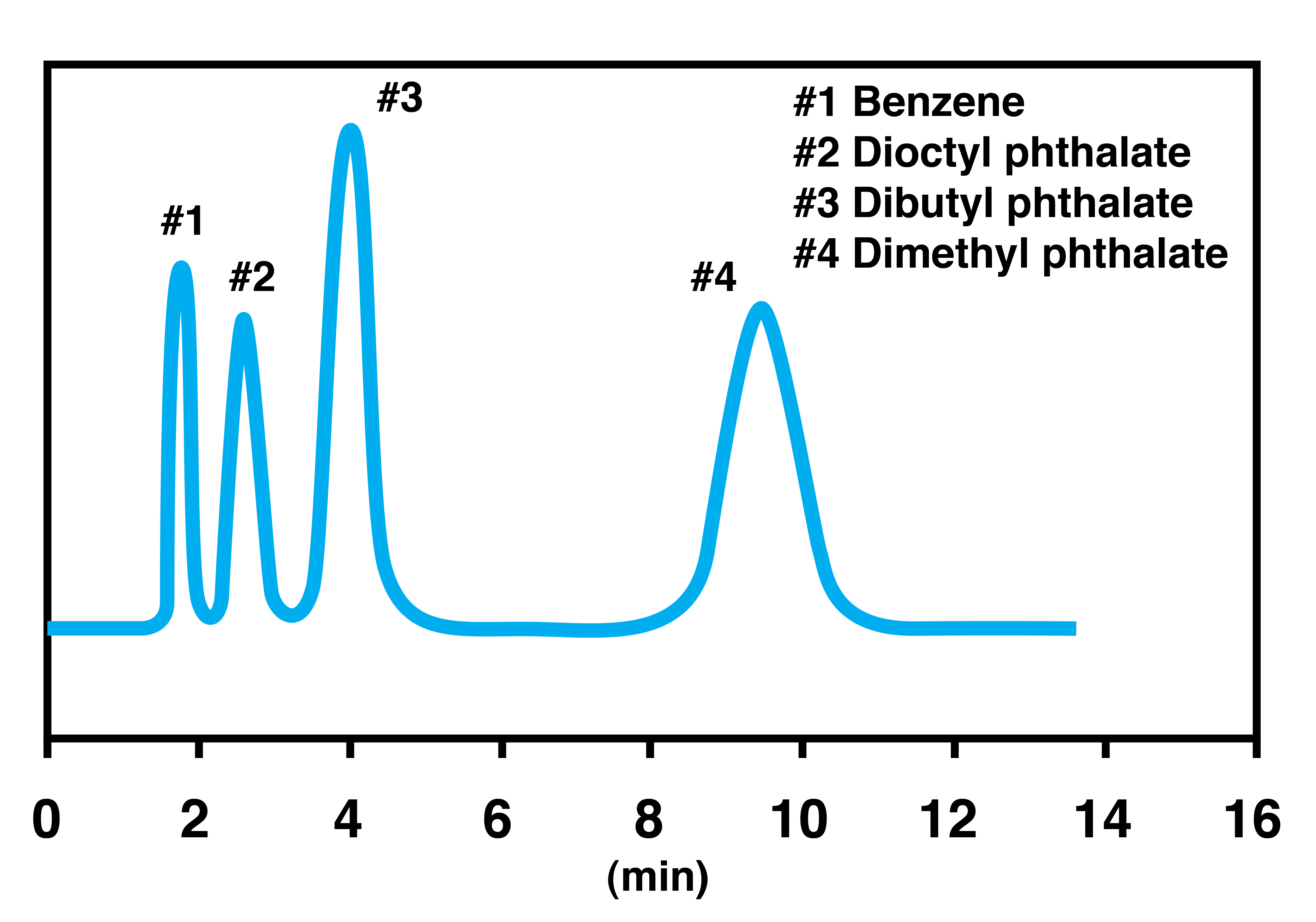
Premium Rf Spherical Silica Gel, 100Å, 40-75μm
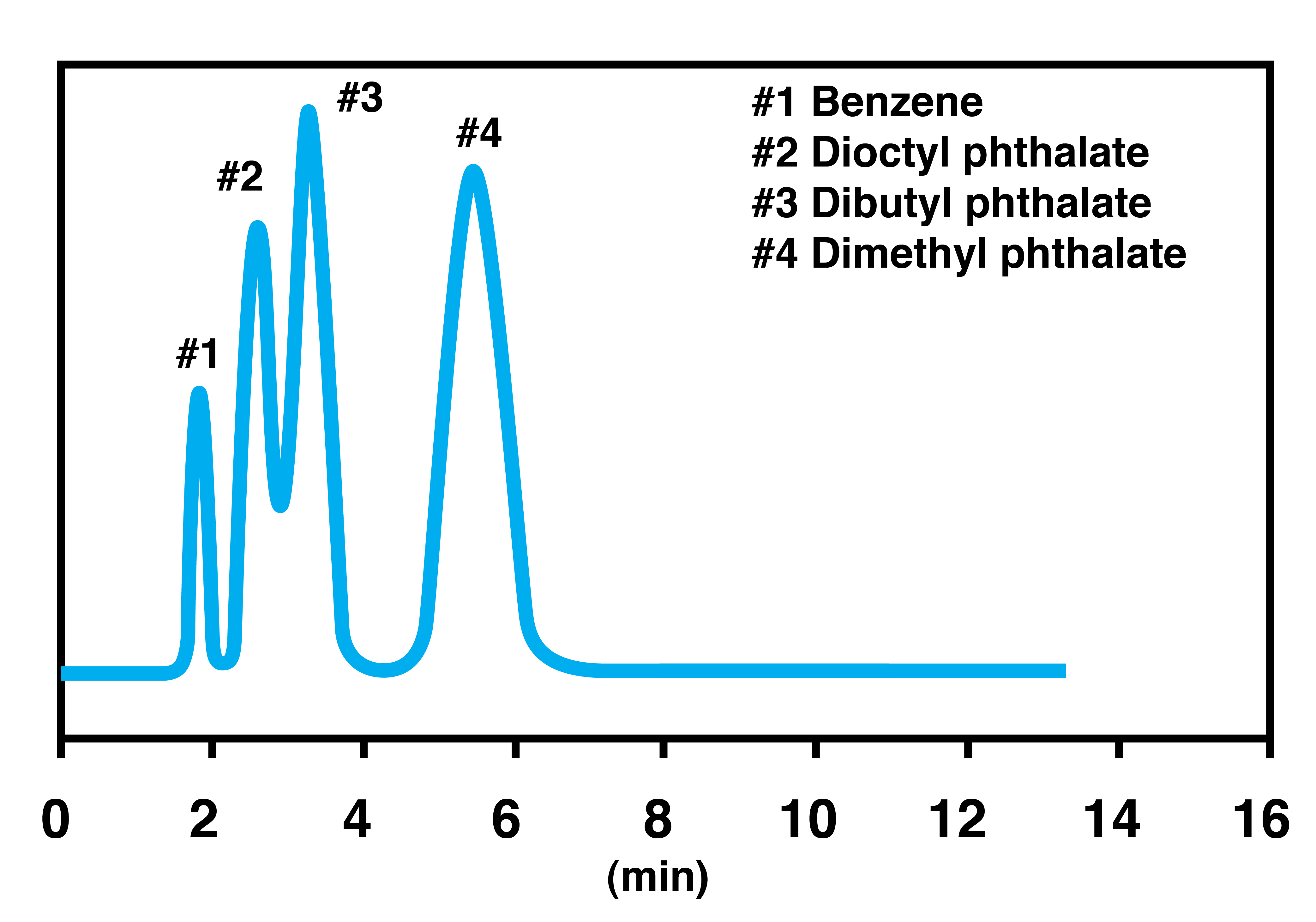
Premium Rf Spherical NH Silica Gel, 100Å, 40-75μm
Pressure: 0.03 MPaPressure: 0.03 MPa
k’ DMP 4.39k’ DMP 2.13
N/m DMP 4333N/m DMP 2715
Separation of Basic Compounds
The Amine functionalized Silica Grade shows good separation for basic compounds. Normally silica strongly adsorbs basic compounds by ionic adsorption (H-bond interaction).
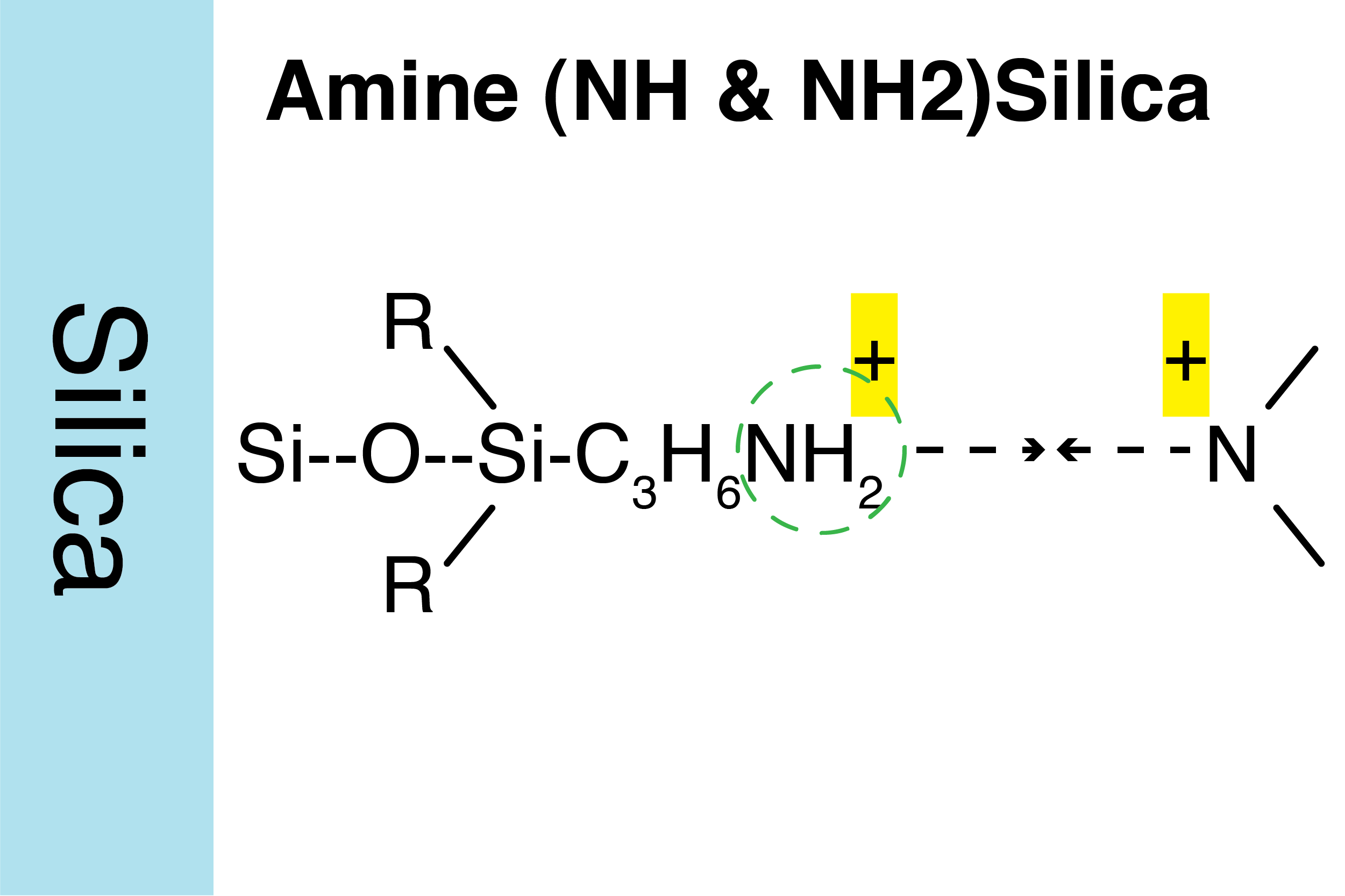
Chromatography Operating Conditions
Column: 28 x 100 mm cartridge column
Silica: Premium Rf Spherical Silica Gel, 100Å, 40-75μm vs. Premium Rf Spherical NH Silica Gel, 100Å, 40-75μm
Mobile phase: Ethyl-acetate/n-hexane 10/90 (w/w)
Flow rate: 28 ml/min
Detection: UV-254 nm
Samples: 1) Benzene, 2) Di-butyl phthalate, 3) Nicotine
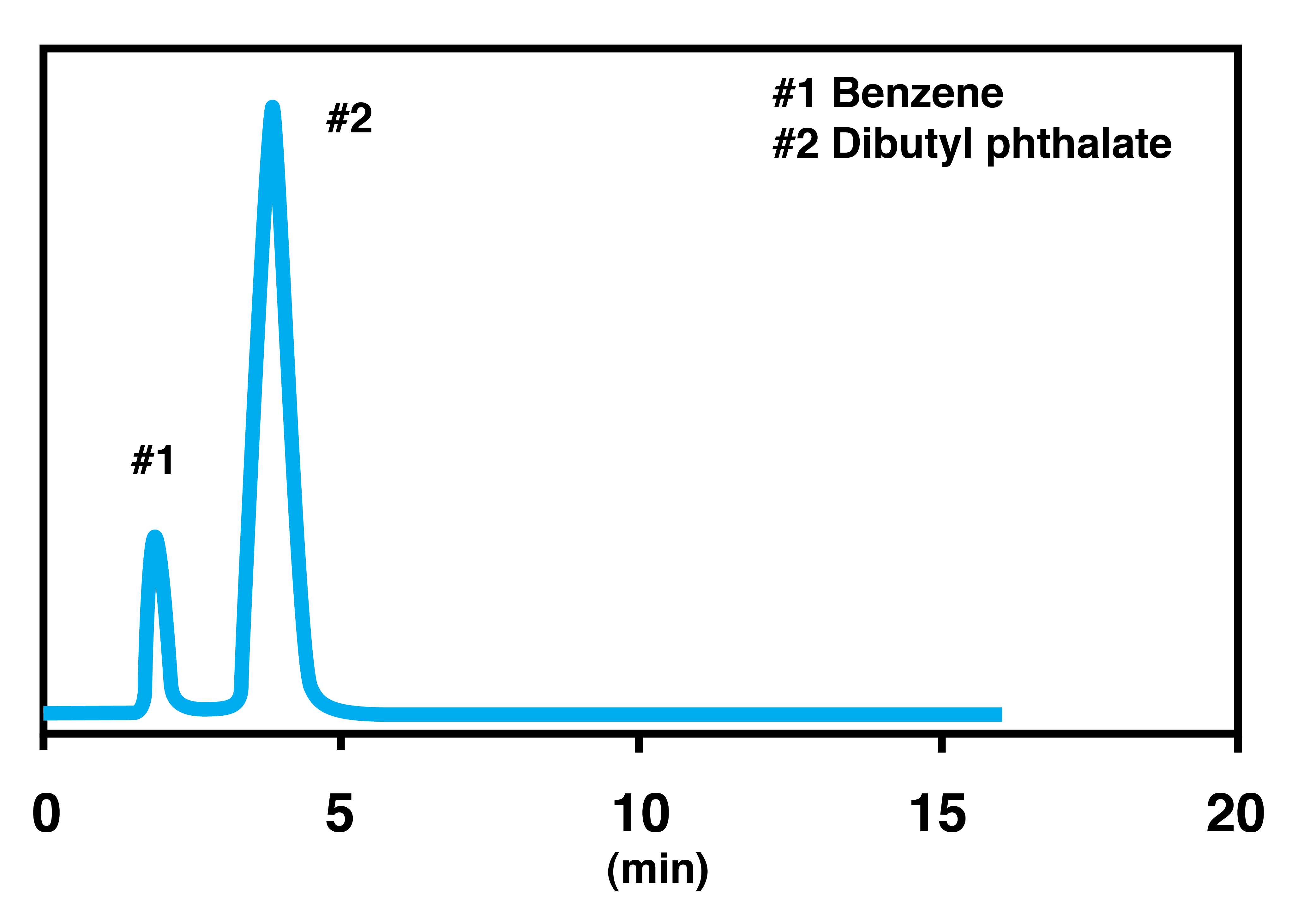
Premium Rf Spherical Silica Gel, 100Å, 40-75μm
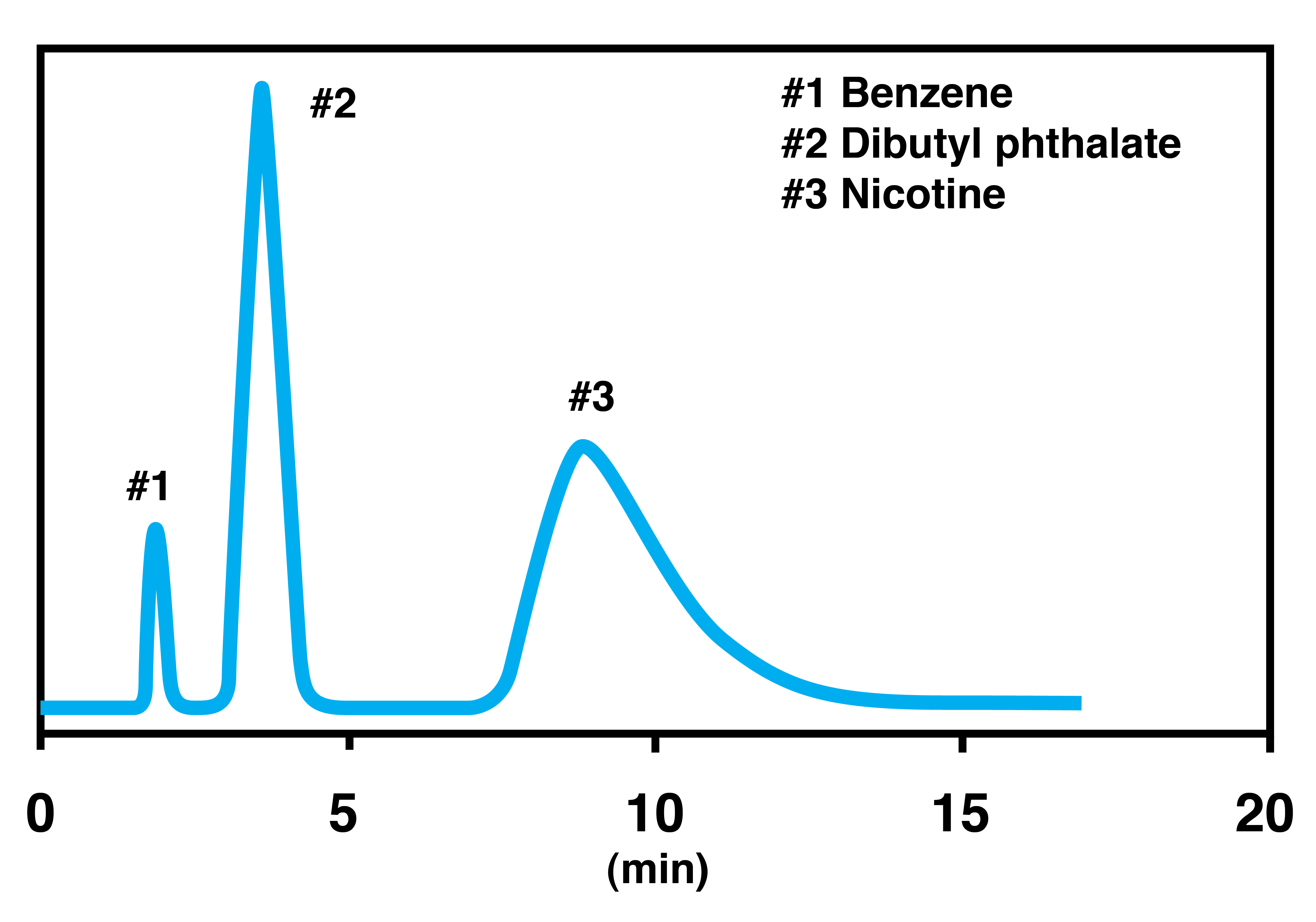
Premium Rf Spherical NH Silica Gel, 100Å, 40-75μm
Comparison of Diamino (DNH) Silica to Amino Silica and bare Silica
The Diamino (DNH) Silica shows the same selectivity in Normal Phase mode but has a shorter retention time.
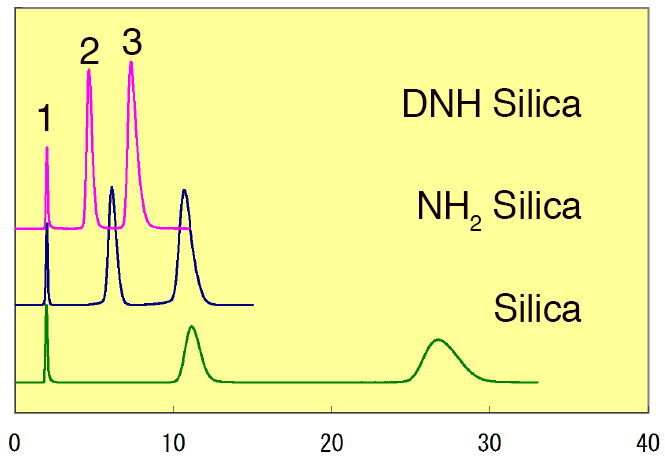
Chromatography Operating Conditions
Column: 28 x 100 mm cartridge column
Mobile phase: Ethyl-acetate/Hexane 5/95 (w/w)
Flow rate: 28 ml/min
Samples: 1) Benzene, 2) Di-butyl phthalate, 3) Di-methyl phthalate
Scavenger Silicas for Removal of Heavy Metals, Acid Chlorides, Isocyanates, and Amines
The removal of residual heavy metal catalysts after organic reactions is as important as the development of the catalyst reaction process itself.
Silica scavengers bond quickly and efficiently to the heavy metals of the used catalysts and remove these metals from the target.
Porous silica gel is modified using an appropriate silane coupling agent which contains special functional groups. The modified silica has a strong affinity for heavy metals.
The Scavenger Silicas are available in any desired quantity, from small-scale laboratory bench applications to large-scale chemical, pharmaceutical, and biological processes.
| Grade | Adsorbed Species |
|---|---|
| Diamino (DNH) Silica | Ni, Cu, Zn, Ru, Pd, Cd, Pb |
| Amino (NH) Silica | Ni, Cu, Pd(II) |
| Thiol (SH) Silica | Ru, Pd, Pt, Hg |
| SCX (SO3H) Silica | Fe, Co, Ru |
There are several uses of these columns:
- In pharmacy, the usual objective of transition metal removal is to obtain an Active Pharmaceutical Ingredient (API) of high purity in an economical way.
- In other industries, the objective is to improve environmental sustainability.
- Still other industries use these columns for waste recycling.
- Finally, recovery of expensive precious metals is a common use of these columns in numerous industries including pharmacy.
| Adsorption Capacity (mmol/g) | |||||||||
|---|---|---|---|---|---|---|---|---|---|
| Pd (II) / Pd (OAc)2 | Pd (0) / Pd (dba)2 | Ni (II) / Ni (acac)2 | |||||||
| Solvent | CHCl3 | THF | Toluene | CHCl3 | THF | Toluene | THF | DMF | DMSO |
| Diamino Silica | 0.64 | 0.82 | 0.74 | 0.18 | 0.27 | 0.31 | 0.41 | 0.41 | 0.61 |
| Amino Silica | 0.42 | 0.63 | 0.55 | 0.09 | 0.21 | 0.15 | 0.24 | 0.10 | 0.08 |
| Thiol Silica | 0.60 | 0.74 | 0.64 | 0.23 | 0.27 | 0.31 | 0.09 | 0.06 | 0.04 |
| Adsorption Capacity (mmol/g) | |||||||||
|---|---|---|---|---|---|---|---|---|---|
| Cu (II) / Cu (OAc)2 | Cu (I) / CuCl | Fe (III) / Fe (acac)2 | |||||||
| Solvent | MeCN | THF | DMF | DMF | DMSO | - | MeCN | THF | Toluene |
| Diamino Silica | 0.50 | 0.51 | 0.4 | 0.15 | 0.13 | - | 0.05 | 0.03 | 0.03 |
| Amino Silica | 0.41 | 0.47 | 0.35 | 0.15 | 0.15 | - | 0.08 | 0.02 | 0.09 |
| Thiol Silica | 0.24 | 0.24 | 0.19 | 0.05 | 0.10 | - | 0.06 | 0.04 | 0.09 |
| SCX Silica | - | - | - | - | - | - | 0.19 | 0.18 | 0.20 |
For Diamino, Amino, and Thiol: Base silica is Premium Rf Spherical Silica Gel, 100Å, 75-200μm
For SCX: Base silica is Premium Rf Spherical Silica Gel, 70Å, 75-200μm
| Solvent Effect | |||||||
|---|---|---|---|---|---|---|---|
| Pd (II) / Pd (OAc)2 | Pd (0) / Pd (dba)2 | ||||||
| Solvent | CHCl3 | THF | Toluene | CHCl3 | THF | Toluene | |
| Diamino Silica | |||||||
| Amino Silica | |||||||
| Thiol Silica | |||||||


